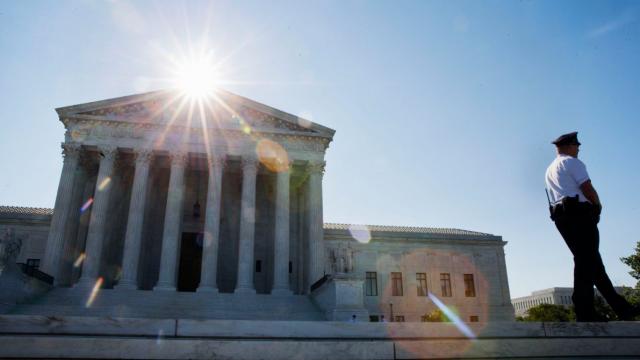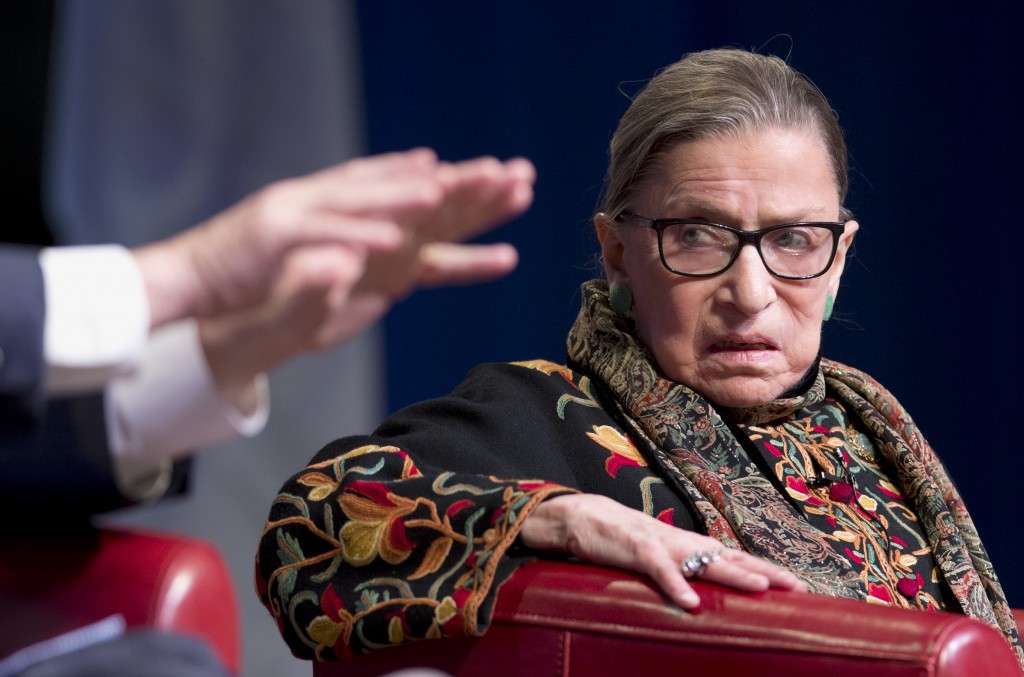
Last December the same conservative activists who persuaded the Supreme Court to gut the Voting Rights Act challenged the historic principle of “one person, one vote.” They asked the Court to allow states to draw districts based on eligible or registered voters, as opposed to total population, which had been the standard for more than 50 years. If that happened, millions of people, including children and non-citizens, would have been denied political representation. Districts would have become older, whiter, more conservative and more favorable to Republicans.
On Monday the Supreme Court rejected that challenge, upholding “one person, one vote” in a unanimous 8-0 decision. Justice Ruth Bader Ginsburg wrote the decision, saying that all people are entitled to equal representation under the law. “It remains beyond doubt that the principle of representational equality figured prominently in the decision to count people, whether or not they qualify as voters,” she wrote. (Justices Thomas and Alito concurred in part.)
Here’s the key part of her argument:
"Adopting voter-eligible apportionment as constitutional command would upset a well-functioning approach to districting that all 50 States and countless local jurisdictions have long followed. As the Framers of the Constitution and the Fourteenth Amendment comprehended, representatives serve all residents, not just those eligible to vote. Nonvoters have an important stake in many policy debates and in receiving constituent services. By ensuring that each representative is subject to requests and suggestions from the same number of constituents, total-population apportionment promotes equitable and effective representation."
This is a major victory for voting rights, and a huge crisis averted. If states had been able to use current voting-age population instead of total population as the metric for drawing districts, as I previously reported, a staggering 55 percent of Latinos—those who are under 18 or non-citizens—would not have been counted, as well as 45 percent of Asian Americans and 30 percent of African Americans.
Yet this is still in many ways a bittersweet victory, given that the 2016 election is the first in 50 years without the full protectionsof the Voting Rights Act. We’re seeing the clear impact of that decision this year, with five-hour lines in Arizona, voters turned away from the polls by North Carolina’s voter-ID law, and 300,000 registered voters who could be disenfranchised in Wisconsintomorrow.
Imagine if protecting voting rights were the norm, rather than the exception, before the Supreme Court. That’s why the future of the Court is the most important issue facing the country in 2016 and beyond.
*
Meanwhile, Ian Millhiser reports for Think Progress how Justice Ginsburg shut down one of America's most notorious white rights activists:
Edward Blum is the godfather of white rights litigation in the Supreme Court. He spearheaded the litigation in Shelby County v. Holder, which convinced five conservative justices to strike down much of the Voting Rights Act. And he played a similar role in a major challenge to affirmative action currently pending before the Supreme Court. As I have previously noted, “Blum has probably done more than anyone who does not sit on the Supreme Court to dismantle America’s civil rights laws.”
One of Blum’s most ambitious efforts to make the halls of American power whiter has failed, however. Indeed, it failed disastrously. All eight justices rejected the plaintiffs arguments in Evenwel v. Abbott, a case backed by Blum, with six justices joining a majority opinion by Justice Ruth Bader Ginsburg.
The issue in Evenwel is whether states must redraw congressional districts in ways that would shift representation away from communities with large numbers of non-citizen immigrants and towards whiter communities. Under the Fourteenth Amendment, states are allocated congressional representation by “counting the whole number of persons in each state, excluding Indians not taxed.” Thus non-citizens, disenfranchised persons, children and other people who are ineligible to vote still count when seats in the House of Representatives are dolled out to states.
As Justice Ginsburg notes in her opinion, every state uses a similar method to carve up legislative districts within the state. Under the “one person/one vote” doctrine, states are required to draw districts with roughly equal population. Currently, “all States use total population numbers from the census when designing congressional and state-legislative districts, and only seven States adjust those census numbers in any meaningful way.” Thus, a congressional district in one part of a state will have roughly the same number of people as a congressional district in another part of a state, even if different numbers of people actually vote in these two districts.
The plaintiffs in Evenwel asked the Supreme Court to change this equation. Had they prevailed, states with large numbers of non-voters would still receive extra representation in Congress, but they also would have been required to carve up districts according to the number of eligible voters who live in the state. This would have mattered a great deal in states like Texas, the state specifically at issue in Evenwel, where a large number of non-citizen Latinos reside.
In effect, if Blum’s position had prevailed in Evenwel, Latino communities in Texas would have lost representation while the rest of the state would have gained it. But the state would still receive extra seats in Congress for the Latino residents cut out of the districting process.
As Ginsburg notes in her opinion, Blum’s position is out of step with the Constitution and its history. It would be anomalous for the Fourteenth Amendment to require total population to be used to determine how much representation a state receives, while simultaneously requiring states to use a different metric to allocate representation within the state.
Adopting Blum’s preferred rule, moreover, could potentially cast much of the nation into chaos as states struggle to adapt to the new regime. As Ginsburg writes, “adopting voter-eligible apportionment as constitutional command would upset a well-functioning approach to districting that all 50 States and countless local jurisdictions have followed for decades, even centuries.”
Yet, while Blum did not prevail today, some ominous signs for Latino communities in states like Texas can be found in Ginsburg’s opinion. Ginsburg repeatedly uses language suggesting that states have some discretion to decide how to divvy up representation within the state. She writes that “it is plainly permissible” to divide up districts as Texas has done, and that “states and localities may comply with the one-person, one-vote principle by designing districts with equal total populations.”
That leaves an open question — whether states also may comply with one person/one vote by designing districts in the way that Blum would prefer. Ginsburg’s opinion does not answer that question. Nor does a separate opinion by Justice Samuel Alito, which states that “whether a State is permitted to use some measure other than total population is an important and sensitive question that we can consider if and when we have before us a state districting plan that, unlike the current Texas plan, uses something other than total population as the basis for equalizing the size of districts.”
Nevertheless, it is reasonably likely that Texas, or some other conservative state, will test this proposition in short order. Why wouldn’t the sort of lawmakers who embrace tactics like partisan gerrymandering and voter ID laws try to shift representation towards more conservative white communities if they can get away with it?
The practical effect of Evenwel, in other words, may simply be to shift Blum’s advocacy away from the Supreme Court and towards state legislatures.
3 WAYS TO SHOW YOUR SUPPORT
- Log in to post comments













Comments
Goku replied on
gud artical
gud artical
Ellie Grace replied on
I read your article and It's
I read your article and It's particularly entrancing, <a href="http://www.hirepaperwriter.com/pay-and-have-essays-written">essays written by professionals</a> I really thoroughly enjoyed while read this article.
Ellie Grace replied on
http://www.goodessay.com/pay
http://www.goodessay.com/pay-and-have-essays-written